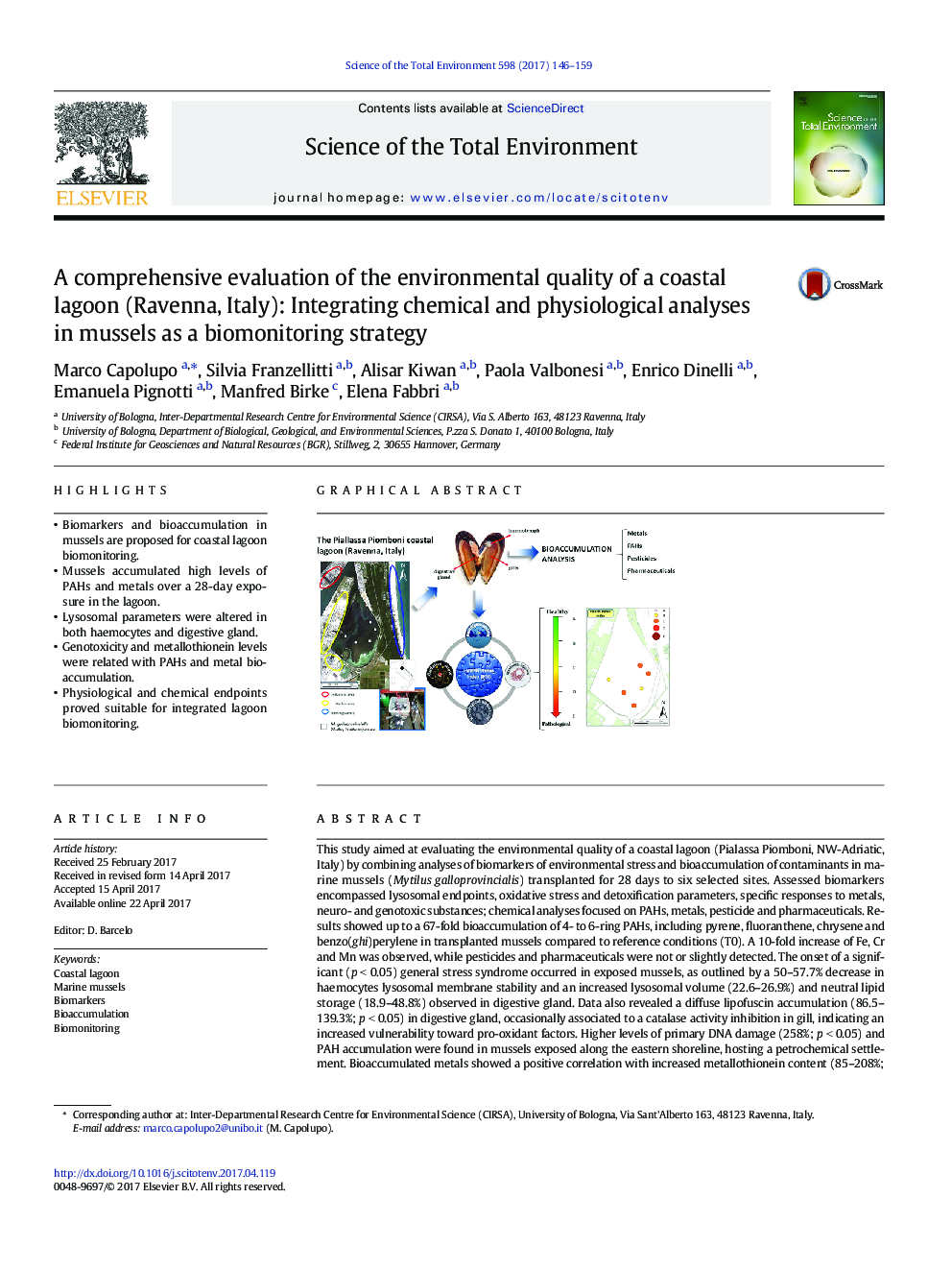| Article ID | Journal | Published Year | Pages | File Type |
|---|---|---|---|---|
| 5750929 | Science of The Total Environment | 2017 | 14 Pages |
â¢Biomarkers and bioaccumulation in mussels are proposed for coastal lagoon biomonitoring.â¢Mussels accumulated high levels of PAHs and metals over a 28-day exposure in the lagoon.â¢Lysosomal parameters were altered in both haemocytes and digestive gland.â¢Genotoxicity and metallothionein levels were related with PAHs and metal bioaccumulation.â¢Physiological and chemical endpoints proved suitable for integrated lagoon biomonitoring.
This study aimed at evaluating the environmental quality of a coastal lagoon (Pialassa Piomboni, NW-Adriatic, Italy) by combining analyses of biomarkers of environmental stress and bioaccumulation of contaminants in marine mussels (Mytilus galloprovincialis) transplanted for 28 days to six selected sites. Assessed biomarkers encompassed lysosomal endpoints, oxidative stress and detoxification parameters, specific responses to metals, neuro- and genotoxic substances; chemical analyses focused on PAHs, metals, pesticide and pharmaceuticals. Results showed up to a 67-fold bioaccumulation of 4- to 6-ring PAHs, including pyrene, fluoranthene, chrysene and benzo(ghi)perylene in transplanted mussels compared to reference conditions (T0). A 10-fold increase of Fe, Cr and Mn was observed, while pesticides and pharmaceuticals were not or slightly detected. The onset of a significant (p < 0.05) general stress syndrome occurred in exposed mussels, as outlined by a 50-57.7% decrease in haemocytes lysosomal membrane stability and an increased lysosomal volume (22.6-26.9%) and neutral lipid storage (18.9-48.8%) observed in digestive gland. Data also revealed a diffuse lipofuscin accumulation (86.5-139.3%; p < 0.05) in digestive gland, occasionally associated to a catalase activity inhibition in gill, indicating an increased vulnerability toward pro-oxidant factors. Higher levels of primary DNA damage (258%; p < 0.05) and PAH accumulation were found in mussels exposed along the eastern shoreline, hosting a petrochemical settlement. Bioaccumulated metals showed a positive correlation with increased metallothionein content (85-208%; p < 0.05) observed in mussels from most sites. Overall, the use of physiological and chemical analyses detected chronic alterations of the mussel health status induced by specific toxicological pathways, proving a suitable approach in the framework of biomonitoring programs of coastal lagoons.
Graphical abstractDownload high-res image (308KB)Download full-size image
